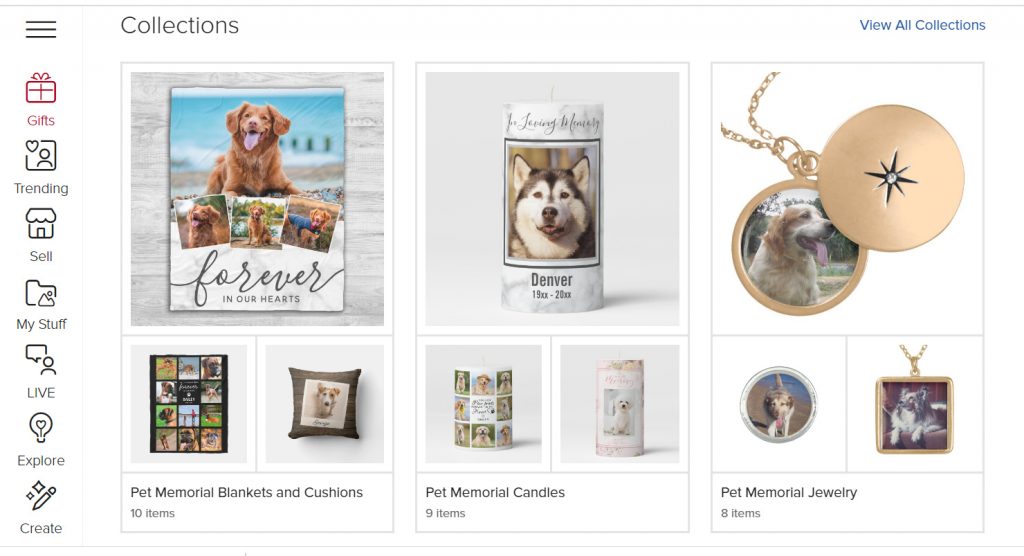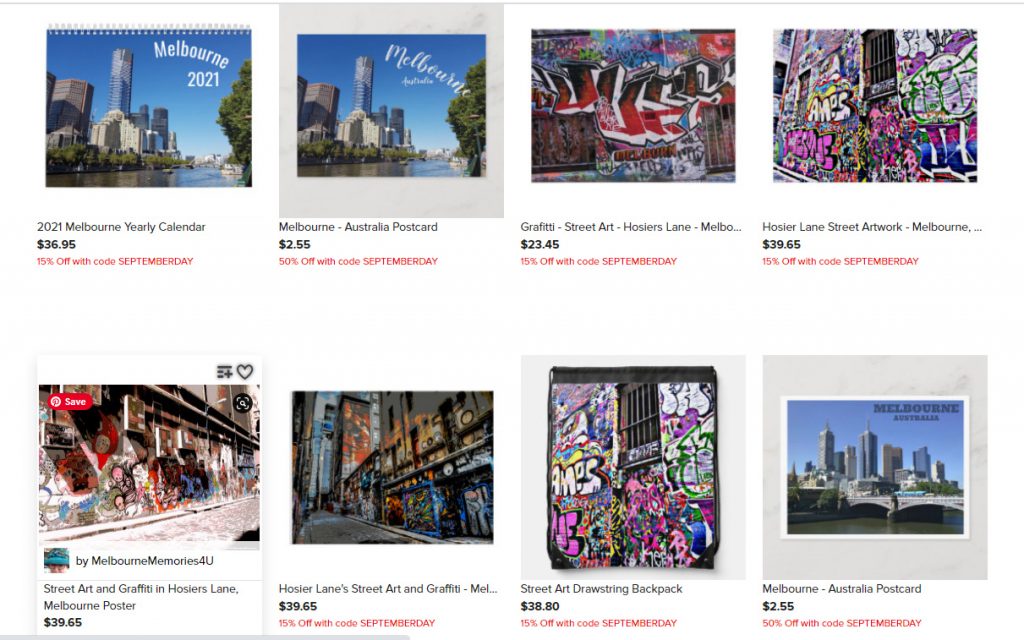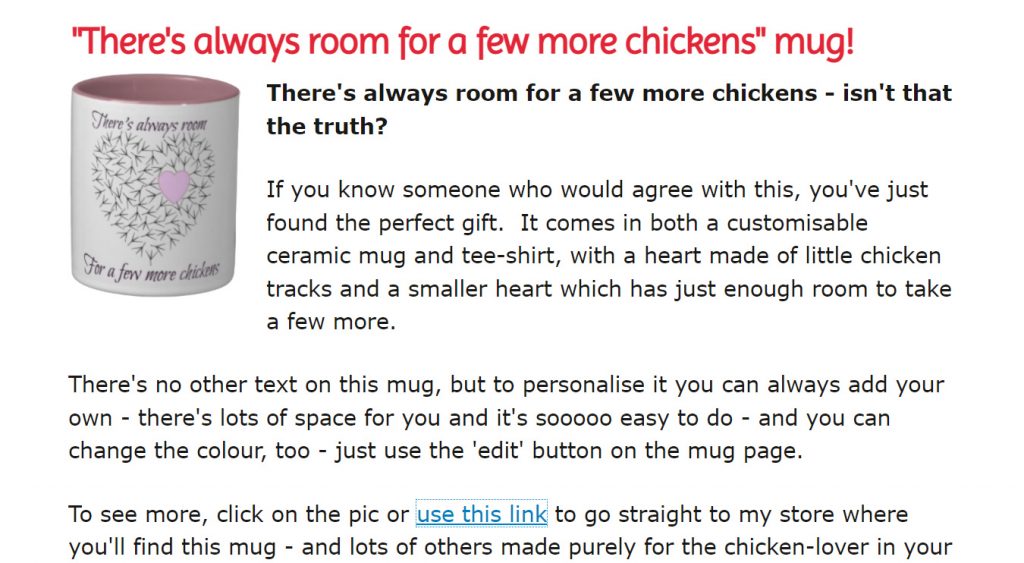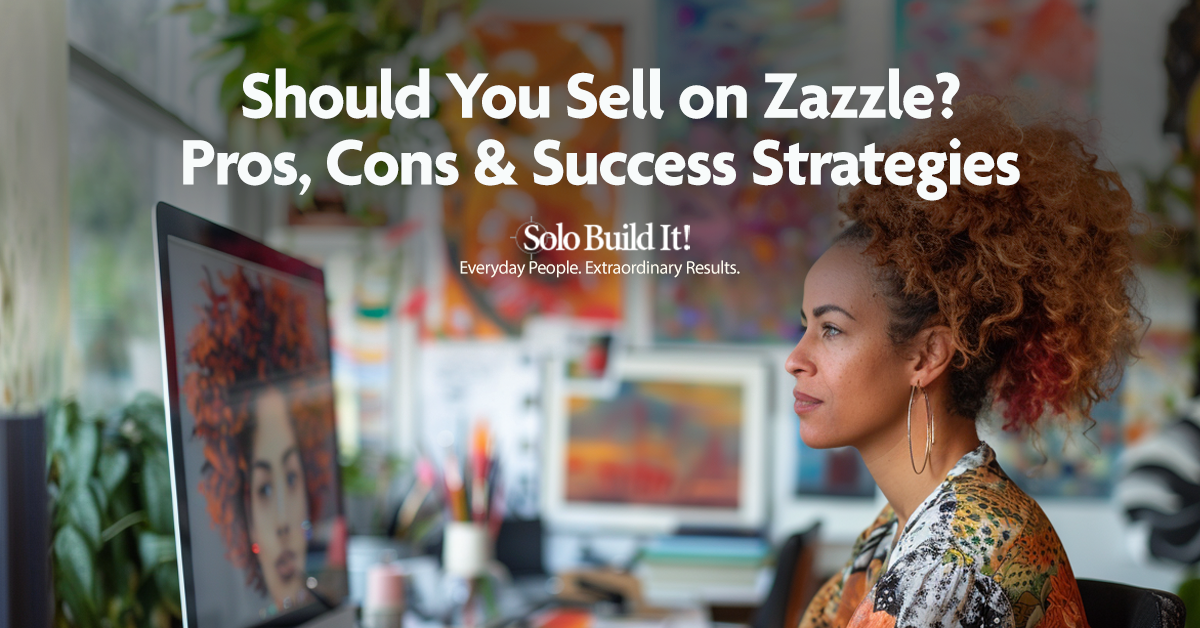Curious about the pros and cons of using Zazzle? I’ve been with Zazzle for over a decade, and I’d love to share my experiences with you.
Zazzle can be a fun and easy way to create and sell your own products, both on the platform itself and your own site or blog. You can build up a nice passive income over time doing this.
What is Zazzle and How Does it Work?
Zazzle is a pioneer in the print-on-demand (POD) industry, which has revolutionized the way artists, designers, and creators can bring their ideas to life and monetize their work. The concept of print-on-demand is simple yet powerful: instead of producing and storing products in advance, items are printed and shipped only after a customer places an order.
Here’s how it works: you upload your designs (illustrations, photos, logos, anything creative) and Zazzle offers a massive catalog of products to put them on. T-shirts, mugs, phone cases, even puzzles and homeware — the possibilities are endless.
Once your design is set up, Zazzle takes care of everything behind the scenes. They print your design onto the chosen product, and handle packaging and shipping directly to the customer.
You simply set your profit margin (royalty) and enjoy the potential for passive income as people discover and purchase your creations!
Sounds too good to be true? Well, there are a few drawbacks, which I’ll explain below. Overall though, the pros of Zazzle outweigh its cons. In my opinion, selling on Zazzle is totally worth it!
Let’s look into the pros first.
Pros of Using Zazzle
- Good quality products
- Products can be customized by the buyer
- Wide range of items from cards, posters, canvases, stationery, clothing, electronics, personalized gifts, office products, wedding items, crafts and more
- Zazzle does everything for you — manufacturing, shipping, customer service
- Excellent marketing
- You can be an affiliate too
- Environmentally friendly — products only made on demand.
In summary, all you have to do is the fun part — which is the creativity. OK, you do have to do some uploading and keyword selection, but once that’s done your design is for sale forever on the Zazzle marketplace.
Their products get good reviews for quality and there are so many to choose from that there’s bound to be something suitable for your niche.
What Exactly Can You Sell on Zazzle?
Let your creativity run wild! Zazzle offers a massive selection of products across a wide range of categories. Here’s a taste of what you can sell:
- Clothing: T-shirts, hoodies, tank tops, leggings, dresses, aprons, and baby clothes.
- Accessories: Phone cases, tote bags, backpacks, notebooks, keychains, and jewelry.
- Homeware: Mugs, throw pillows, wall art, clocks, blankets, and even shower curtains.
- Stationery: Greeting cards, invitations, stickers, notepads, and calendars.
- Tech Accessories: Laptop sleeves, phone chargers, mousepads, and power banks.
You can also find quirky and niche-specific items, such as customizable dog bowls for pet lovers or personalized golf balls for sports enthusiasts.
My niche is sympathy and memorial cards and gifts. Zazzle has been perfect for that. Customers love products that they can customize with their own photos of people or pets.

A Cool Pro of Using Zazzle: Their Collections Feature
You can also put together collections of items to promote on your own websites or social media. Below is an example of some of my pet loss collections. Some of the photos are mine on products I set up myself, and others are products from other people, for which I get affiliate commissions.

I have friends in the travel niche who sell items on Zazzle related to the destination they’re writing about.

I also know someone who has a website about raising chickens.. She has created some wonderfully quirky chicken designs to sell on mugs or Christmas ornaments. She even does a range of chicken postage stamps for Christmas!
Another Pro of Using Zazzle: They Market Your Products
Zazzle is very good at marketing. One of my products appeared on their Facebook advertising once, which was rather exciting. You’ll often see them at the top of Google for many product searches.
But, as I mention in the cons, there is a lot of competition on Zazzle for every product type, so it pays to do your own marketing too, as my chicken lady friend does on her own website, like this:

How Much Does it Cost to Sell on Zazzle?

The good news is that listing your products on Zazzle is completely free! There are no upfront fees, monthly subscriptions, or listing charges.
For every sale, Zazzle charges a base price that covers the cost of manufacturing, printing, and shipping the product. You don’t have any control over this price.
As the seller, you can then add your desired royalty on top of this base price, effectively setting the final retail price for the customer. This is the profit you make on each sale. You get to set your own royalty rate as a percentage of the base price, anywhere from 5% to 99%. Keep in mind, a higher royalty might make your products less competitive.
Here’s an example:
Let’s say you design a customizable pet loss charm bracelet and set your royalty at 20%. The base price of the bracelet is $25. If someone purchases the bracelet, you would earn a royalty of $5 (20% of $25).
Another way to earn with Zazzle are its referral fees.
Zazzle offers a 15% referral fee if a customer clicks through from your website or social media and makes a purchase (even if it’s not your product).
Quite often a referral pays more than the royalty, so it’s worth joining Zazzle’s Associates Program.
Zazzle’s fee structure is very seller-friendly. There are no hidden costs and you have control over your profit margin. The key is to find the right royalty rate that balances profitability with staying competitive in the marketplace.
Finally, the thing I like best is that you don’t need to have a storefront, and there are no upfront costs. You don’t need to keep stock or deal with manufacturing, customers or shipping.
Zazzle does all that for you so you can do what you do best — designing.
Promote Other People’s Products on Zazzle as an Affiliate
Not creative? No worries! Become an affiliate and promote other people’s designs on Zazzle.
As I mentioned above, Zazzle pays a 15% referral fee. That’s also true if you promote someone else’s products. So you don’t have to have your own designs to make a passive income from Zazzle. You can promote other people’s work.
Being a Zazzle affiliate can be a great addition to a diversified monetization strategy for a content-based website. It gives your readers a lot of choice of products, and allows you to offer something relevant and personal to your site.
Cons of Using Zazzle
- Zazzle is getting pretty saturated, so there’s lots of competition.
- It’s a lot of work to set up and slow getting started.
- Filling out the sales details on each product is time-consuming and tedious. But hey, you only have to do it once!
- Even though you can set your own royalty, in reality the fierce competition means you need to compete on price and not set your royalty rate too high.
Like anything else, you get out of Zazzle what you put into it. No one said that making money online was easy. But if you work away at it little by little, you can gradually build up a large portfolio of products on Zazzle, which will keep on earning for you year in and year out.
Full disclosure, as I’ve been with Zazzle so long, I haven’t tried any of the other print on demand companies. You may well find that they don’t have the disadvantages I’ve mentioned above.
It might be worth doing some research to see whether another company suits you better. Cafepress has been around a long time, and there are a couple of newer ones, Redbubble and Teepublic, that are getting very good press.
Can You Use AI-Generated Art on Zazzle Products?
Zazzle allows the use of AI-generated content, as long as it adheres to certain guidelines outlined on their content policy page.
Here’s what you need to know:
Zazzle emphasizes that all AI-generated designs must be “entirely novel works, and not knowingly copied from any existing design.”
Your AI-generated designs should meet the same quality standards as any other artwork sold on Zazzle. In addition, if any AI-generated content is part of the final design, you need to tag it as “generativecontent”.
The legal landscape surrounding AI-generated art and copyright is still evolving. It’s unclear whether the AI itself or the person using the AI tool holds the copyright.
The bottom line: If you want to experiment with AI art, use it as a starting point. Creatively modify the AI-generated image to ensure it’s a unique and original work before uploading it to Zazzle.
My Hands-On Tips for Using Zazzle
So, with the pros and cons of using Zazzle, is it worth it? I think, if you put in a bit of effort over time, and follow the tips I share below, you may be surprised what you can achieve. Most of what I’m saying would be valid for any print on demand site, not just Zazzle.
- Sell the same design on multiple products. Just copy and paste the title and description of your design across to save time. You don’t need to describe the item itself as Zazzle does that for you.
- If you create several items at once it’s possible to bulk edit from your store’s product page. Once it’s done your product is there forever. It’s worth it for something that can then make a passive income for you for years and years.
- Grab the opportunity of designing on the newest products as soon as Zazzle brings them out to beat the competition.
- Put your designs on items that people are likely to buy in multiples. I was surprised when I sold multiples of a sympathy card, but realized that stores such as newsagents and gift shops may well be getting their stock from Zazzle. My most successful cards were the thank you cards for coming to a funeral as people buy large quantities of these.
- Consider products that may be used for group activities, such as t-shirts for sports teams, or promotional materials for conferences. Make sure it’s obvious in your description that these can be customized.
- Keep the products you choose relevant to your niche so you can market them to your audience.
- Do your own marketing. Don’t leave it all to Zazzle. Create your own website to display your designs. Post them to Facebook and Pinterest. Zazzle gives you better rankings too if you share your products widely. It’s easy to do from the store and collections pages.
- Be competitive with your royalties. It’s all very well being able to set your royalty at any rate you like from 5% to 99%, but if your product ends up being way more expensive than everyone else’s, customers will likely just choose another design. After all, the base product is the same. Unless your design is way better than your competitors on the same item, people won’t be prepared to pay a premium for it.
- Choose higher price items to put your designs on. You’re not going to make a fortune on postcards and greetings cards, but add a few calendars, framed wall art, silver lockets, hoodies, watches, mugs, jigsaws etc. and it all starts to add up.
- Finally, a warning. Do not use other people’s designs, art or photos. You could end up with copyright issues. Even stock photos usually have restrictions about commercial use, so be very careful when using anything you didn’t design yourself.
Why not join the Solo Build It! community, flex your creative muscles and become a Zazzle maker too? In my view, the pros of using Zazzle definitely outweigh the cons.
Editor’s note: This post was originally published in October 2022 and was updated and republished in May 2024.

Latest posts by Lesley Postle (see all)
- Pros and Cons of Using Zazzle: A Seller’s Guide to Success - May 23, 2024
- Working From Home With Chronic Illness: 10 Proven Tips - August 25, 2022
- How I Thrived When Forced to Quit My Job Due to Chronic Illness - August 4, 2022


